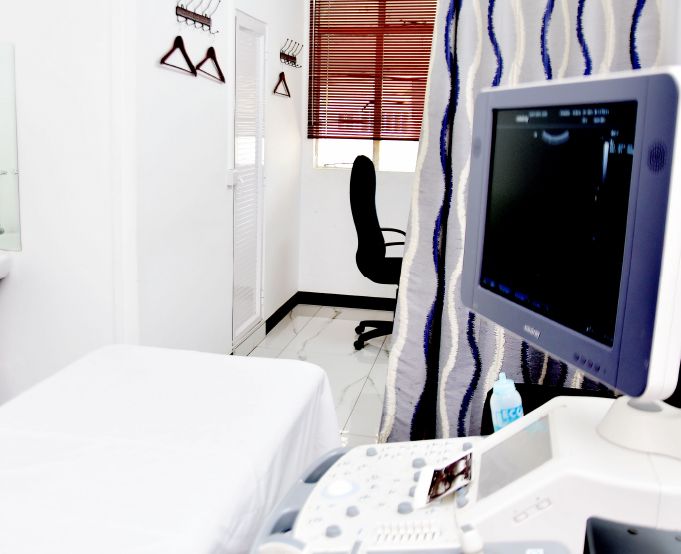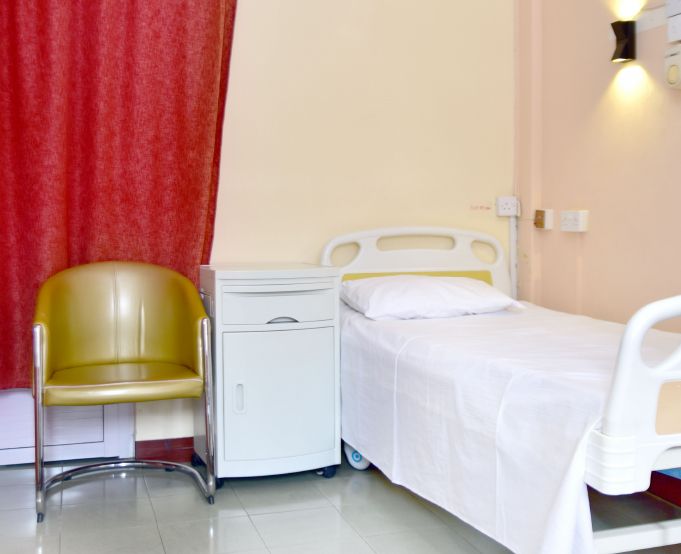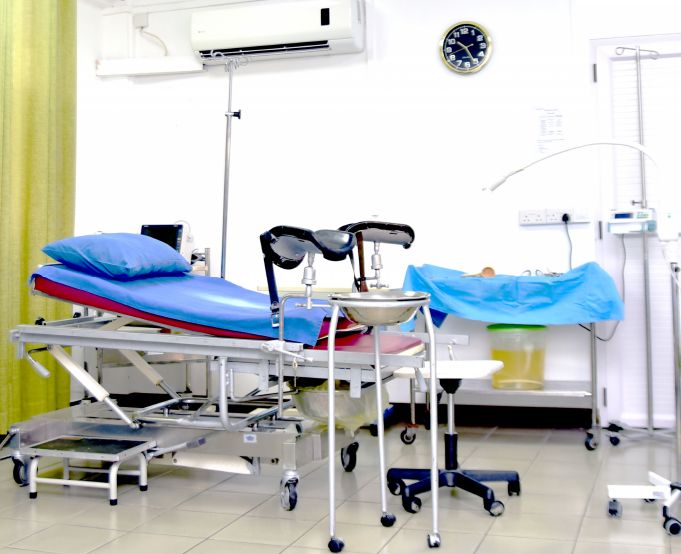Emergency Tel: 211 5157
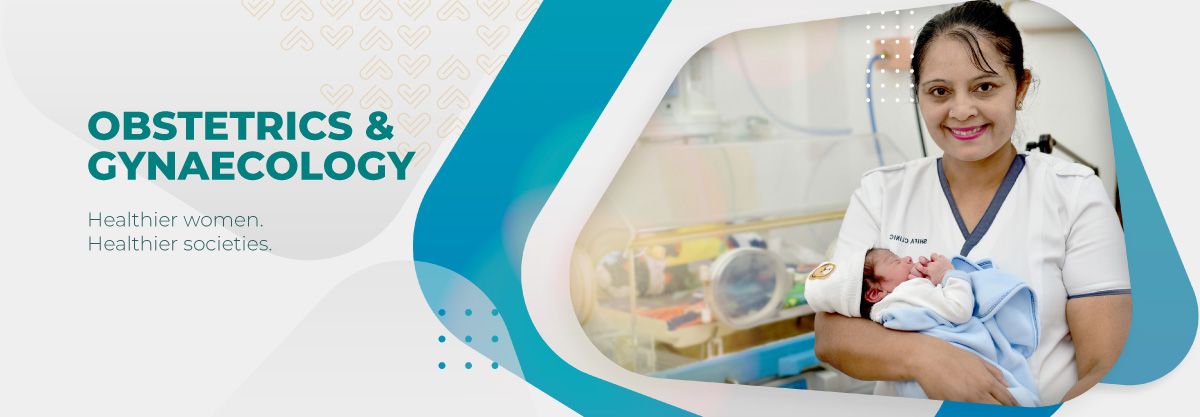
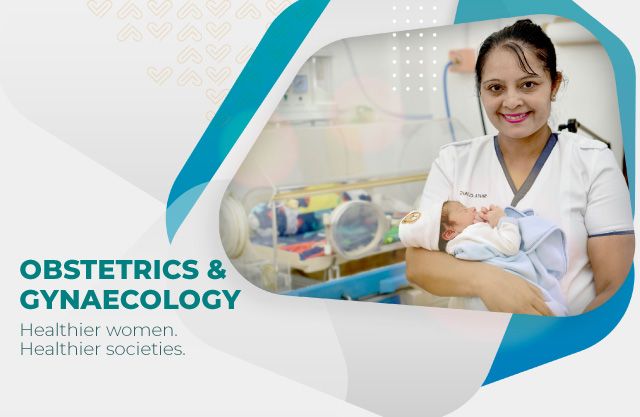
- Home
- Specialities
- Obstetrics & Gynaecology
Obstetrics & Gynaecology
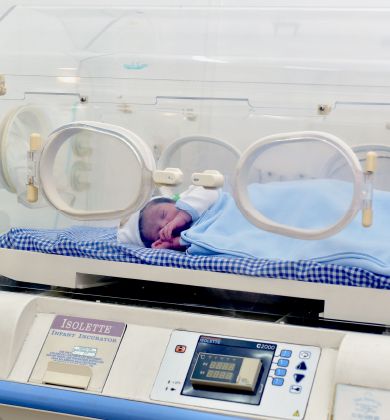
-
Overview
The Obstetrics and Gynaecology Department provides modern comprehensive diagnostic and treatment modalities in a caring environment for women throughout all seasons of life. Our specialised medical team offers advanced maternity services for normal and high risk pregnancies, postpartum and family planning services, infertility screening and treatments, and all endoscopic gynaecological operations in addition to conventional gynaecology surgeries and medical therapies.
-
Obstetrics
- Pre-conceptional counselling.
- Routine Antenatal care.
- Emergency & Critical care backup for high risk pregnancies like diabetes in pregnancy, Hypertension in pregnancy and other medical disorders in pregnancy.
24x7 availability of Gynaecologist and Anaesthetists for for emergency assistance - Advanced Labor Room facilities.
- Internationally accepted infection control protocols for patient care.
-
Gynecological Surgeries
- Laparoscopic Surgery for conditions like - Uterine fibroid, ovarian cyst, Adenomyosis, Uterine prolapse, Ectopic pregnancy etc.
- Hysteroscopic procedures and surgeries.
-
Family Planning Services
- We offer contraception in the following ways - Barrier, Hormonal contraceptives (oral and injectable), Intrauterine device ( Cu-T).
- Permanent sterilisation in the form of post-partum sterilisation and laparoscopic tubal occlusion (LTO).
-
Caesarian Section (C-Section)
Why it's done
Health care providers might recommend a C-section if:
- Labor isn't progressing normally. Labor that isn't progressing (labor dystocia) is one of the most common reasons for a C-section. Issues with labor progression include prolonged first stage (prolonged dilation or opening of the cervix) or prolonged second stage (prolonged time of pushing after complete cervical dilation).
- The baby is in distress. Concern about changes in a baby's heartbeat might make a C-section the safest option.
- The baby or babies are in an unusual position. A C-section is the safest way to deliver babies whose feet or buttocks enter the birth canal first (breech) or babies whose sides or shoulders come first (transverse).
- You're carrying more than one baby. A C-section might be needed for women carrying twins, triplets or more. This is especially true if labor starts too early or the babies are not in a head-down position.
- There's a problem with the placenta. If the placenta covers the opening of the cervix (placenta previa), a C-section is recommended for delivery.
- Prolapsed umbilical cord. A C-section might be recommended if a loop of umbilical cord slips through the cervix in front of the baby.
- There's a health concern. A C-section might be recommended for women with certain health issues, such as a heart or brain condition.
- There's a blockage. A large fibroid blocking the birth canal, a pelvic fracture or a baby who has a condition that can cause the head to be unusually large (severe hydrocephalus) might be reasons for a C-section.
- You've had a previous C-section or other surgery on the uterus. Although it's often possible to have a vaginal birth after a C-section, a health care provider might recommend a repeat C-section.
Some women request C-sections with their first babies. They might want to avoid labor or the possible complications of vaginal birth. Or they might want to plan the time of delivery. However, according to the American College of Obstetricians and Gynecologists, this might not be a good option for women who plan to have several children. The more C-sections a woman has, the greater the risk of problems with future pregnancies.
After the procedure
A C-section usually requires a hospital stay for 2 to 3 days.
Once the anesthesia begins to wear off, you'll be encouraged to drink fluids and walk. This helps prevent constipation and deep vein thrombosis. Your health care team will monitor your incision for signs of infection. The bladder catheter will likely be removed as soon as possible.
You can start breastfeeding as soon as you're ready, even in the delivery room. Ask your nurse or a lactation consultant to teach you how to position yourself and support your baby so that you're comfortable. Your health care team will select medications for your post-surgical pain with breastfeeding in mind.
When you go home
During the C-section recovery process, discomfort and fatigue are common. To promote healing:- Take it easy. Rest when possible. Try to keep everything that you and your baby need within reach. For the first few weeks, don't lift more than 25 pounds.
- Use recommended pain relief. To soothe incision soreness, your health care provider might recommend a heating pad and pain medications that are safe for breastfeeding women and their babies. These include ibuprofen (Advil, Motrin IB, others) and acetaminophen (Tylenol, others).
- Wait to have sex. To prevent infection, wait at least six weeks to have sex and don't put anything in your vagina after your C-section.
- Wait to drive.
Check your C-section incision for signs of infection. Pay attention to any symptoms. Contact your health care provider if:
- Your incision is red, swollen or leaking discharge
- You have a fever
- You have heavy bleeding
- You have worsening pain
-
Tubal Ligation
Tubal ligation — also known as having your tubes tied or tubal sterilization — is a type of permanent birth control. During tubal ligation, the fallopian tubes are cut, tied or blocked to permanently prevent pregnancy.
Tubal ligation can be done at any time, including after childbirth or in combination with another abdominal surgery, such as a C-section. Most tubal ligation procedures cannot be reversed. If reversal is attempted, it requires major surgery and isn't always effective.
Why it's done
Tubal ligation is one of the most commonly used surgical sterilization procedures for women. Tubal ligation permanently prevents pregnancy, so you no longer need any type of birth control. However, it does not protect against sexually transmitted infections.
Tubal ligation may also decrease your risk of ovarian cancer, especially if the fallopian tubes are removed.
Tubal ligation isn't right for everyone, however. Talk with your doctor or health care provider to make sure you fully understand the risks and benefits of the procedure.
Your doctor may also talk to you about other options, including long-acting reversible contraceptives such as an intrauterine device (IUD) or a birth control device that's implanted in your arm. -
Abdominal Hysterectomy
An abdominal hysterectomy is a surgical procedure that removes your uterus through an incision in your lower abdomen. Your uterus or womb is where a baby grows if you’re pregnant. A partial hysterectomy removes just the uterus, leaving the cervix intact. A total hysterectomy removes the uterus and the cervix. Sometimes a hysterectomy includes removal of one or both ovaries and fallopian tubes, a procedure called a total hysterectomy with salpingo-oophorectomy.
A hysterectomy can also be performed through an incision in the vagina (vaginal hysterectomy) or by a laparoscopic or robotic surgical approach — which uses long, thin instruments passed through small abdominal incisions.
Why it's done:
You may need a hysterectomy to treat:- Gynecologic cancer. If you have a gynecologic cancer — such as cancer of the uterus or cervix — a hysterectomy may be your best treatment option. Your other options might include radiation or chemotherapy.
- Fibroids. A hysterectomy is the only certain, permanent solution for fibroids — benign uterine tumors that often cause persistent bleeding, anemia, pelvic pain or bladder pressure. Nonsurgical treatments of fibroids are a possibility, depending on your discomfort level and tumor size. Many women with fibroids have minimal symptoms and require no treatment.
- Endometriosis. In endometriosis, the tissue lining the inside of your uterus (endometrium) grows outside the uterus on your ovaries, fallopian tubes, or other pelvic or abdominal organs. When medication or conservative surgery doesn't improve endometriosis, you might need a hysterectomy along with removal of your ovaries and fallopian tubes (bilateral salpingo-oophorectomy).
- Uterine prolapse. Descent of the uterus into your vagina can happen when supporting ligaments and tissues weaken. Uterine prolapse can lead to urinary incontinence, pelvic pressure or difficulty with bowel movements. A hysterectomy may be necessary to treat these conditions.
- Abnormal vaginal bleeding. If your periods are heavy, irregular or prolonged each cycle, a hysterectomy may bring relief when the bleeding can't be controlled by other methods.
- Chronic pelvic pain. Occasionally, surgery is a necessary last resort for women who experience chronic pelvic pain that clearly arises in the uterus. However, a hysterectomy provides no relief from many forms of pelvic pain, and an unnecessary hysterectomy may create new problems. Seek careful evaluation before proceeding with such major surgery.
A hysterectomy ends your ability to become pregnant. If you think you might want to become pregnant, ask your doctor about alternatives to this surgery. In the case of cancer, a hysterectomy might be the only option. But for other conditions — including fibroids, endometriosis and uterine prolapse — you may be able to try less invasive treatments first.
During hysterectomy surgery, your surgeon might also perform a related procedure that removes both of your ovaries and your fallopian tubes (bilateral salpingo-oophorectomy). You and your doctor should discuss ahead of time whether you need this procedure, which results in what's known as surgical menopause.
With surgical menopause, menopause symptoms often begin suddenly for women after having the procedure done. Depending on how much these symptoms affect your quality of life, you may need short-term treatment with hormones.Results
It takes time to get back to your usual self after an abdominal hysterectomy — about six weeks for most women. During that time:- Get plenty of rest.
- Don't lift anything heavy for a full six weeks after the operation.
- Stay active after your surgery, but avoid strenuous physical activity for the first six weeks.
- Wait six weeks to resume sexual activity.
- Follow your doctor's recommendations about returning to your other normal activities.
Life after a hysterectomy
A hysterectomy permanently changes some aspects of your life. For instance:- You'll no longer have menstrual periods.
- Most of the time, you'll get relief from the symptoms that made your surgery necessary.
- You won't be able to become pregnant.
- If you're premenopausal, having your ovaries removed along with a hysterectomy starts menopause.
- If you have a hysterectomy before menopause and you keep your ovaries, you may experience menopause at a younger than average age.
- If you have a partial hysterectomy, your cervix remains in place, so you're still at risk of cervical cancer. You need regular Pap tests to screen for cervical cancer.
- Myomectomy
The surgeon's goal during myomectomy is to take out symptom-causing fibroids and reconstruct the uterus. Unlike a hysterectomy, which removes your entire uterus, a myomectomy removes only the fibroids and leaves your uterus.
Women who undergo myomectomy report improvement in fibroid symptoms, including decreased heavy menstrual bleeding and pelvic pressure.
Why it's done
Your doctor might recommend myomectomy for fibroids causing symptoms that are troublesome or interfere with your normal activities. If you need surgery, reasons to choose a myomectomy instead of a hysterectomy for uterine fibroids include:- You plan to bear children
- Your doctor suspects uterine fibroids might be interfering with your fertility
- You want to keep your uterus
- Dilation and curettage (D&C)
Dilation and curettage (D&C) is a procedure to remove tissue from inside your uterus. Health care providers perform dilation and curettage to diagnose and treat certain uterine conditions — such as heavy bleeding — or to clear the uterine lining after a miscarriage or abortion.
In a dilation and curettage, your provider uses small instruments or a medication to open (dilate) the lower, narrow part of your uterus (cervix). Your provider then uses a surgical instrument called a curette, which can be a sharp instrument or suction device, to remove uterine tissue.
Why it's done
Dilation and curettage is used to diagnose or treat a uterine condition.
To diagnose a condition
Before doing a D&C, your provider might recommend a procedure called endometrial biopsy or endometrial sampling to diagnose a condition. Endometrial sampling might be done if:- You have unusual uterine bleeding
- You have bleeding after menopause
- You have unusual endometrial cells, which are discovered during a routine test for cervical cancer
To perform the test, your provider collects a tissue sample from the lining of your uterus (endometrium) and sends the sample to a lab for testing. The test can check for:
- Endometrial intraepithelial hyperplasia — a precancerous condition in which the uterine lining becomes too thick
- Uterine polyps
- Uterine cancer
If more information is needed, your provider then might recommend a D&C, which is usually done in an operating room.
To treat a condition
When performing a D&C to treat a condition, your provider removes the contents from inside your uterus, not just a small tissue sample. This might be done to:- Prevent infection or heavy bleeding by clearing tissues that remain in the uterus after a miscarriage or abortion
- Remove a tumor that forms instead of a typical pregnancy (molar pregnancy)
- Treat excessive bleeding after delivery by clearing out any placenta that remains in the uterus
- Remove cervical or uterine polyps, which are usually noncancerous (benign)
- Intrauterine Device (IUD)
Mirena is a hormonal intrauterine device (IUD) that can provide long-term birth control (contraception).
The device is a T-shaped plastic frame that's inserted into the uterus, where it releases a type of the hormone progestin. To prevent pregnancy, Mirena:- Thickens mucus in the cervix to stop sperm from reaching or fertilizing an egg
- Thins the lining of the uterus and partially suppresses ovulation
Mirena prevents pregnancy for up to seven years after insertion.
Why it's done
Mirena offers effective, long-term contraception. It can be used in premenopausal women of all ages, including teenagers.
Among various benefits, Mirena:- Eliminates the need to interrupt sex for contraception
- Doesn't require partner participation
- Can remain in place for up to seven years
- Can be removed at any time, followed by a quick return to fertility
- Can be used while breast-feeding — although you may need to wait six to eight weeks after having a baby so that you don't risk injuring the uterus during placement
- Doesn't carry the risk of side effects related to birth control that contains estrogen
Mirena can decrease menstrual bleeding after three or more months of use. About 20 percent of women stop having periods after one year of using Mirena.
Mirena can also decrease:- Severe menstrual pain and pain related to the growth of uterine-lining tissue outside the uterus (endometriosis)
- The risk of pelvic infection
- The risk of endometrial cancer
Because of these noncontraceptive benefits, Mirena is often prescribed for women with:
- Heavy menstrual bleeding
- Cramping or pain with periods
- Endometriosis
- Unusual growth of the lining of the uterus (endometrial hyperplasia)
- Unusual growth of uterine-lining tissue into the muscular wall of the uterus (adenomyosis)
- Anemia
- Fibroids
Mirena isn't appropriate for everyone. Your health care provider may discourage use of Mirena if you have:
- Breast cancer, or have had it
- Uterine or cervical cancer
- Liver disease
- Uterine conditions, such as fibroids, that interfere with the placement or retention of Mirena
- A pelvic infection or current pelvic inflammatory disease
- Unexplained vaginal bleeding
- PAP Smear
A Pap smear, also called a Pap test, is a procedure to test for cervical cancer in women.
A Pap smear involves collecting cells from the cervix — the lower, narrow end of the uterus that's at the top of the vagina.
Why it's done
A Pap smear is used to screen for cervical cancer.
The Pap smear is usually done in conjunction with a pelvic exam. In women older than age 30, the Pap test may be combined with a test for human papillomavirus (HPV) — a common sexually transmitted infection that can cause cervical cancer. In some cases, the HPV test may be done instead of a Pap smear.
Who should have a Pap smear?
You and your doctor can decide when it's time for you to begin Pap testing and how often you should have the test.
In general, doctors recommend beginning Pap testing at age 21.
How often should a Pap smear be repeated?
Doctors generally recommend repeating Pap testing every three years for women ages 21 to 65.
Women age 30 and older can consider Pap testing every five years if the procedure is combined with testing for HPV. Or they might consider HPV testing instead of the Pap test.
If you have certain risk factors, your doctor may recommend more-frequent Pap smears, regardless of your age. These risk factors include:- A diagnosis of cervical cancer or a Pap smear that showed precancerous cells
- HIV infection
- Weakened immune system due to organ transplant, chemotherapy or chronic corticosteroid use
- A history of smoking
You and your doctor can discuss the benefits and risks of Pap smears and decide what's best for you based on your risk factors.
Who can consider stopping Pap smears?
In certain situations a woman and her doctor may decide to end Pap testing, such as:- After a total hysterectomy. After a total hysterectomy — surgical removal of the uterus including the cervix — ask your doctor if you need to continue having Pap smears.
If your hysterectomy was performed for a noncancerous condition, such as uterine fibroids, you may be able to discontinue routine Pap smears.
But if your hysterectomy was for a precancerous or cancerous condition of the cervix, your doctor may recommend continuing routine Pap testing. - Older age. Doctors generally agree that women can consider stopping routine Pap testing at age 65 if their previous tests for cervical cancer have been negative.
Discuss your options with your doctor and together you can decide what's best for you based on your risk factors. If you're sexually active with multiple partners, your doctor may recommend continuing Pap testing.
- Contraceptive Implants
Contraceptive implants are a long-term birth control option for women. A contraceptive implant is a flexible plastic rod about the size of a matchstick that is placed under the skin of the upper arm.
It releases a low, steady dose of a progestational hormone to thicken cervical mucus and thin the lining of the uterus (endometrium). Contraceptive implants typically suppress ovulation as well.
Contraceptive implants are radio opaque and can be seen on X-rays — useful for identifying the location of an implant.
Why it's done
Contraceptive implants offer effective, long-term contraception. Among various benefits, a contraceptive implant:- Can be removed at any time, followed by a quick return to fertility
- Eliminates the need to interrupt sex for contraception
- Contains no estrogen
Contraceptive implants aren't appropriate for everyone, however. Your health care provider may discourage use of a contraceptive implant if you:
- Are allergic to any components of the implant
- Have had serious blood clots, a heart attack or a stroke
- Have liver tumors or liver disease
- Have known or suspected breast cancer or a history of breast cancer
- Have undiagnosed abnormal genital bleeding.
Doctor Schedule
Doctors scheduled for the week.
| Monday & Wednesday | 11hr - 13hr | Dr Nawoor Ismet |
| Monday & Wednesday | 11hr - 13hr | Dr Peerally Areff |
| Monday & Wednesday | 11hr - 13hr | Dr (Mrs) Bomah Himla Devi |
| Monday & Wednesday | 11hr - 13hr | Dr Edoo Ibrahim |
| Monday & Wednesday | 11hr - 13hr | Dr Motolall Rama |
| Monday & Wednesday | 11hr - 13hr | Dr Oodit Ramesh |
Doctors and Specialists of Obstetrics & Gynaecology
Contact Us
-

4, Labourdonnais Street,
Port-Louis -

(230) 211 5157
(230) 211 5181
(230) 211 7559 -

(230) 211 4647
Follow Chisty Shifa Clinic
Patients
Publications
Terms & Conditions | Privacy Policy | COPYRIGHT © 2022 Chisty Shifa.
All rights reserved. Powered by Nova Interaction

